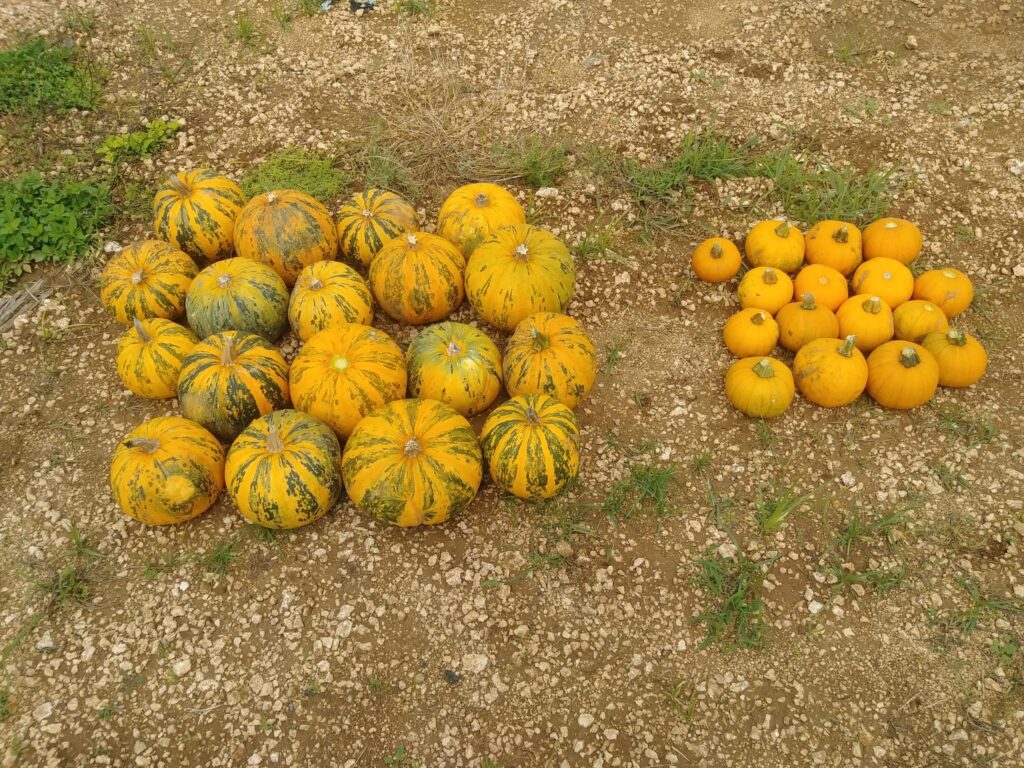UF/IFAS Researching New Breeds of Pumpkins and Calabazas as Next Niche Crop
by LOURDES RODRIGUEZ
Peanuts cartoonist Charles M. Shultz yielded popularity to an almighty pumpkin in the 1966 animated TV Special “It’s the Great Pumpkin Charlie Brown.”
Today, pumpkin popularity for holiday decor, healthy snacking, and scrumptious recipes during fall and winter months has given rise to innovative research led by Geoffrey Meru, assistant professor of vegetable breeding, genetics and genomics at Tropical Research and Education Center (TREC) of the University of Florida Institute of Food and Agricultural Sciences (UF/IFAS).
The goal is to develop varieties of pumpkins varieties that are attractive to growers because they produce high-yielding, superior quality (flesh sweetness, texture, flavor and color) that can withstand hot, humid, and wet conditions of South Florida all year round.
An additional component to the research focuses on the calabaza, also known as the Cuban pumpkin, in South Florida’s Latin community, which lends itself to tasty traditional holiday and winter recipes for Latin American cuisine.
“The cucurbit-breeding program is making headway in developing nutritious dual-purpose pumpkins adapted to South Florida’s tropical climate using traditional and contemporary breeding approaches,” Meru says. “Once available, these cultivars will be integral to promoting a niche industry for specialty pumpkins in south Florida.”
Meru and his research team have conducted growth trials for three seed-oil pumpkins in the past two years. Although seeds of all types of pumpkins are edible, seeds from a seed-oil pumpkin lack a seed coat, and are called “naked,” Meru explains. Naked pumpkin seeds are best suited for oil production and snacks. In most cases, seed-oil pumpkin flesh does not make for good eating.
Additionally, most of the pumpkin seed consumed in the U.S. is imported. The need to breed high-yielding and nutritious varieties that are locally adapted to various agro-ecological zones in the country opens new ground for growers in South Florida. To meet the current and projected demand for pumpkin seed in the US, it is critical for growers to have access to pumpkin varieties with optimized seed yield, seed size, and seed nutrition recorded Meru and his research team in an UF/IFAS Extension Electronic Data Information Source (EDIS) document.
As far as the calabaza, because of its taste, texture, and flesh, it’s use is most popular in Latin American recipes. It is for this reason that Meru hopes breeding varieties of pumpkins and the calabaza will spur new recipes and uses.
Last summer, Meru gathered with a small group of potential growers, consumers and chefs in Homestead for a field day of test tasting. Seventeen different types of pumpkin and calabaza were evaluated. Opinions on color, flavor, moisture, and fiber from stringy to smooth were recorded. The highest-ranking choices made it through to the next part of the research.
The next phase of Meru’s research engages the grower and the public. For calabaza, he is in the process of giving seeds to the public to grow and try, particularly seeds of Seminole pumpkin which is native to Florida. He also is giving seeds of the seed-oil pumpkin for interested growers.
This type of innovative research is symbolic for UF/IFAS Tropical Research and Education Center as it celebrates its 90th anniversary, says Edward “Gilly” Evans, Director of the UF/IFAS Tropical Research and Education Center.

